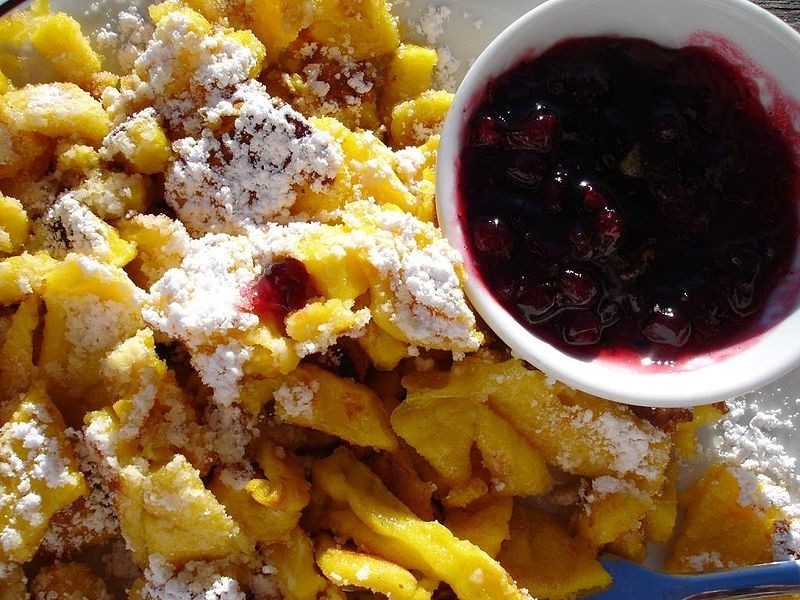Kaiserschmarrn, a surprising Chanukah treat
I’ve had a funny relationship with the German language. On the one hand, because of our history in WW II, I used to get the heebie-jeebies when I heard German. For example, my first time in Switzerland, when I was peacefully riding the train but then heard the automated announcement about the anschluss (connecting train), I bristled at the word. It creeped me out. I hear anschluss and I hear Nazi annexation. Or, the word schnell. On that same trip, I casually heard someone remark “schnell,” and my skin crawled.
On the other hand, German resembles Yiddish. And when I think of Yiddish I think of my Bubbie and Zadie, of warmth, love and coziness, of heimishkeit.
So on the one hand I find German recoiling. On the other, it’s familiar and inviting.
While in the airport a few years ago I overheard someone sitting next to me use the word “lebensmittel.” Ah, lebensmittel, I thought to myself. How sweet! It sounded like the perfect endearing word for how I felt about my adorable new niece at the time. lebensmittel. There were a few more thrown in there that sounded just as perfect for terms of endearment, including nachhatligkeit, lebensmittelgesetz.
Well. Apparently my linguistic intuition is not the sharpest. I came home and looked the word up. Basically lebensmittel means food. Nachhaltigkeit means sustainability. So I guess I hadn’t come up with new foreign and affectionate sounding Yiddishlike terms of endearment after all.
I did find out more about quirky German words, though. Some of those words are so long they make supercalifragilisticexpialidocious look like an abbreviation. We’re talking 77 character long words!
This all brings me to my recent discovery of a delicious Austro-Hungarian-German confection that I thought would be perfect to try on Chanukah. I know, I know.
I usually stick to the classics for holiday treats. Anyway, what beats deep fried and pillowy sufganiyot or crisp lacey latkes? Even sufganiyot — I like mine traditional, I don’t need all the fancy shmancy new personalized flavor injections you see in bakeries today.
The most I’ve allowed myself is the delicious crunchy sugared French Moroccan Sfinj, or that other deep fried confection of Sephardic culture that’s similar to Italian struffoli, the tiniest pearl-sized deep fried balls of dough, formed into clusters and glazed in honey, held by a cupcake holder. Basically, it’s like petite and adorable Ashkenaz Rosh Hashanah teiglach.
Then I recently heard the word kaiserschmarrn to describe an Austrian food. Before I even knew what it was — like I said earlier, something about those German-Yiddish words just pop out at me — I knew I liked it. (Of course, there was always the chance I would look it up and it would turn out to mean something as banal or unappealing as a laundry list.)
This time, however, I was amply rewarded. Kaiserschmarrn, it turns out, lives up to all that it sounds like it will be. It means “emperor’s mess” or “emperor’s mish-mash.” Let me tell you, it is, indeed, one delicious hot mess!
It’s basically a dish full of fried buttery batter torn into random-sized nuggets, laced with rum and flecked with lemon zest, dusted with either confectionary or cinnamon sugar, served alongside either plum jam, red currant jam or homemade applesauce.
Or, for a contemporary twist, there is drenching it with ribbons of nutella and fresh thick whipping cream.
It’s mouthwatering! And it’s Chanukah! And it’s fried dough!
So, my dear reader, go forth and make yourself some kaiserschmarrn.
Gemultichkeit! Or is it Gaumenkitzel?
I’ll stick with a language I know: Chanukah sameach and betayavon!
Copyright Intermountain Jewish News

 54.0°,
Mostly Cloudy
54.0°,
Mostly Cloudy 




